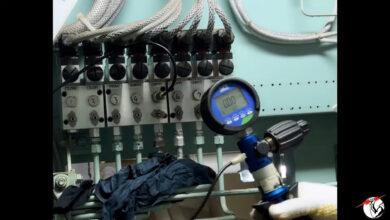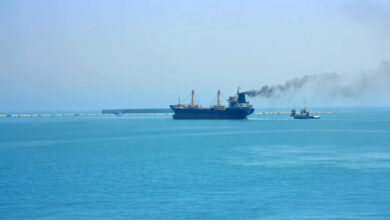Beautiful Nipples, Pistons, and Air Pressure: A Marine Engineer’s Love Story
How to Test a Fuel Pump Puncture Valve on a MAN B&W Engine: A Sarcastic Guide for Overachievers
Oh, joy! Another day, another thrilling escapade into the glamorous world of marine engineering. Today, we’re tackling the ever-so-exciting task of operational checks for the fuel pump puncture valve on MAN B&W engines. Strap in, folks—it’s going to be a wild ride! 🎢
Safety First, Because We Care… Sort Of
Before you unleash your inner mad scientist:
- Wear PPE: Obviously, the fashion statement of coveralls and safety goggles is a must. Can’t have oil ruining your million-dollar manicure. 💅
- Mind the compressed air: It’s air under pressure, not a plaything. Unless you enjoy sudden trips to the hospital. 🚑
- Don’t skip the manual: Sure, you totally remember the 58-step procedure you skimmed last time. But maybe, just maybe, double-check that manual?
Step-by-Step: Testing the Puncture Valve
1. Nipple Placement (No, Not That Kind)
- Locate the puncture valve. Yes, it’s that thing connected to the fuel pump.
- Notice how there’s no nipple attached? That’s because it’s usually connected directly to a pipe. But today, you’re special. You get to screw on a testing nipple. 🎉
- Fun fact: You’ll say the word “nipple” so much, you’ll forget it ever made you giggle.
2. Air Supply: Blow It Up!
- Connect an air supply to your shiny new nipple. This will push the piston inside the valve, activating the mechanism.
- Now, when you open the air, watch as the piston gloriously shoves the valve guide out of the way, bypassing the fuel oil. 🎆
- Translation: The valve prevents fuel from going to the high-pressure line, which is what we’re checking here.
3. The Magic of Reverse: Air Off
- Disconnect the air supply. Watch in awe as the valve guide obediently returns to its chamber.
- This means the spring is doing its job. No applause necessary—it’s just basic mechanics.
4. Repeat Until Bored
- Just to make sure everything’s kosher, do this a couple of times. Air on, piston out. Air off, piston in. Thrilling, isn’t it? 🥱
Common Mistakes (Because You’re Only Human, Right?)
- Forgetting the nipple: Without it, you’ll be staring at a nonfunctional pipe, wondering why nothing’s happening.
- Ignoring air pressure settings: Too much pressure and BOOM! Too little and you’re just wasting time.
- Assuming it’s fine: “Looks good to me!” isn’t an operational check.
Conclusion: Another Day, Another Valve Tested
And there you have it. Testing a puncture valve is, as our guide repeatedly states, very simple. Just attach a nipple, blow some air, and watch the magic. Then pat yourself on the back for being the marine engineering rock star you are. 🤘
Still confused? Drop a comment, and we’ll pretend to care. Until then, stay oily, my friends! 👋
Disclaimer: Results may vary based on your ability to follow instructions and not destroy expensive equipment.





